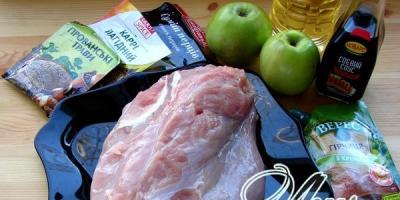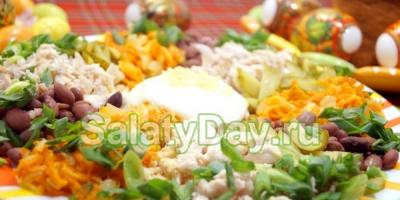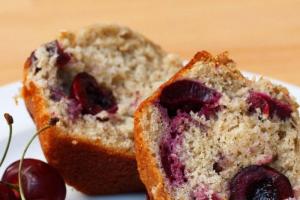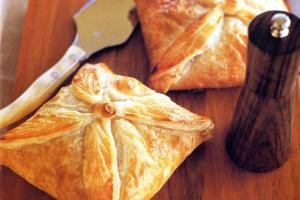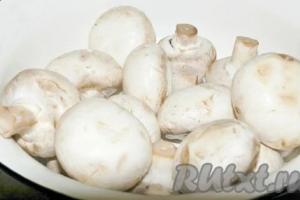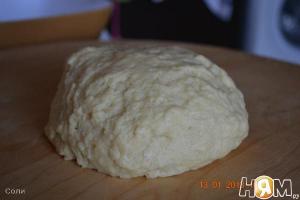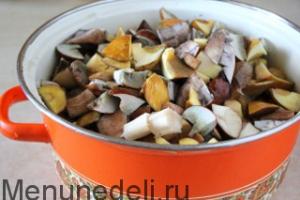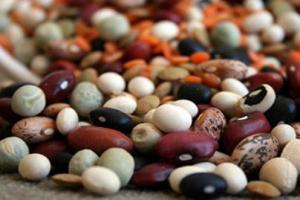There are many recipes for making jam, based on the characteristics of various fruits and berries. At the same time, there are general techniques and requirements for making jam from any raw material.
The ideal vessels for making jam are basins with a capacity of 2 to 6 liters, made of stainless steel or brass. Larger containers are not recommended because tender berries, such as raspberries and strawberries, can be crushed in them, and the jam will turn out boiled. In addition, when using a large volume of berries, their cooking time is greatly extended, which also negatively affects the quality of the jam. Therefore, it is recommended to use basins with low sides for cooking jam.
Jam packaging
The best containers for packaging and storing finished jam are glass jars with a capacity of 0.5; 1; 2 l. The jars must first be washed in hot water, preferably with soda ash or another detergent, until completely clean, then rinsed with clean boiling water and turned upside down to drain the water. After this, the jars are dried in the oven until the moisture is completely removed. Immediately before packaging the finished jam, the jars must be completely dry and hot.
Regardless of the heat source used, the jam should be cooked for no more than 30-40 minutes, excluding the resting time. In the first 5-10 minutes from the moment of boiling, the jam should be cooked over low heat, since during this period the greatest foaming is observed and the contents of the basin may boil away. As the intensity of foam formation decreases and as the syrup thickens, the heat must be increased, making sure that the jam boils evenly and does not overflow over the edge of the basin.
Syrup for jam containing fruits or berries must be transparent and colored in a color that is characteristic of these fruits or berries. It should not have any brownish or brownish tint. The latter indicates that the jam was overheated or cooked over too much heat.
It should be thick enough that it does not flow quickly from the surface of the spoon. The jam should contain equal amounts of berries and syrup. Excess or insufficient amount of syrup indicates a violation of the rules for making jam.
Fruits and berries that are intended for jam are collected on the day of cooking in sunny and dry weather, after they have dried from dew. It is not recommended to pick berries in rainy weather. It is important that the berries and fruits are of the same degree of ripeness.  Unripe and overripe fruits and berries are unsuitable for making jam. Raspberries and strawberries should be collected in sieves or wicker baskets with a capacity of no more than 2-3 kg.
Unripe and overripe fruits and berries are unsuitable for making jam. Raspberries and strawberries should be collected in sieves or wicker baskets with a capacity of no more than 2-3 kg.
If the berries collected from your garden plot do not have any contamination, you do not need to wash them. In all other cases, fruits and berries are washed. Washing must be done after sorting, and some berries after cleaning (for example, after removing sepals from strawberries, stalks from raspberries and calyxes from currants) in cold, clean running water.
Tender berries should be rinsed for 1-2 minutes under running water or by repeated immersion in water in a container with a wired bottom (basket, colander). After washing, the berries and fruits need to be kept in a sieve for 15-20 minutes so that the water drains from them and they dry a little. After this, you can start making jam.
The most common is boiling fruits and berries in sugar syrup. To prepare the latter, a pre-measured amount of granulated sugar is poured into a clean brass or other basin, an enamel pan and filled with cold or hot water, after which the dishes are placed on medium heat and stir with a spoon or slotted spoon until the sugar is completely dissolved. Then the syrup must be brought to a boil. After 1-2 minutes of boiling, the dishes are removed from the heat, and the syrup is considered ready for use.
Both the quality of the jam and its ability to be stored for a long time depend on the correct ratio of parts of sugar and berries or fruits. In the absence of scales, you can determine the weight of sugar by volume: one glass contains 200 g of sugar, a liter jar contains 800 g, and a half-liter jar contains 400 g.
Cooking jam involves some operations for which you need to prepare. Before we start cooking jam You should prepare the necessary utensils: a deep plate for foam, a tablespoon or a slotted spoon. After everything is prepared, place the basin with the syrup on moderate heat, carefully pour a measured amount of berries into it and mix them well with the syrup. To do this, you can take the basin with both hands and shake it in a circular motion. The syrup must cover the fruits or berries. The berries drenched in hot syrup are left for 3-4 hours. If you start cooking the jam immediately, and even over high heat, the syrup will not will have time to be absorbed into the berries, and the latter will shrivel and become very boiled.

Berries and fruits with hard skin (gooseberries, ranet, plums) are pierced with a sharp wooden stick so that the syrup is better absorbed. Black currants must first be blanched, that is, placed in boiling water for 2-3 minutes and then cooled. If this is not done, the berries in cold jam will turn out too dry.
It is necessary to carefully monitor the cooking process and ensure that the jam does not boil over. The fire must be maintained uniformly all the time, not very strong, but not very weak, adjusting it depending on the formation of foam. At the beginning of cooking, after 3-5 minutes have passed from the moment the jam boils, the basin should be removed from the heat, shake lightly with both hands, remove the foam from the surface and put back on the fire. Cooking continues until foam appears again, which is removed again.
They do this until the abundant pricing stops. After this happens and the mass begins to boil more slowly at the same heat, this means that the cooking of the jam is approaching the end. You need to watch this moment very carefully, otherwise the jam will be overcooked. To avoid burning, the basin should be turned frequently and the berries or fruits should be stirred very carefully with a slotted spoon or spoon.
Berry jam
Delicate berries - raspberries, blackberries, strawberries, cherries, small plums, cherries with pits, currants - are boiled in several stages, with breaks of 8-10 hours. The first time, the syrup with berries is only brought to a boil, and then left to stand. The second time, the jam is boiled for 10-15 minutes and left to stand again. Only the third time can it be brought to readiness over high heat. Strawberries, cherries, sweet cherries and pitted plums can be cooked in one step - first over low heat, then over high heat.
With easily boiled berries you can do the following. After cooking lightly in the syrup, carefully remove the berries with a slotted spoon or strainer, and continue to boil the syrup. Shortly before the end of cooking, the berries are dipped into syrup again, brought to a boil again, and then the finished jam is sealed.
When the jam is ready
It is important to be able to determine the degree of readiness of the jam. The following methods are quite common:
1. Take a little syrup from the basin with a spoon, and if it flows from the spoon in a thick mass, and not in a liquid and thin thread, this means that the jam is not ready yet.
2. The cooled sample is carefully poured from a teaspoon onto a plate. If the syrup has not spread, the jam can be considered ready.
If the jam remains liquid for a long time during cooking, which often happens, for example, with cherry jam, you can add a little lemon juice or apple jelly to it. After this, the jam will quickly thicken.
After finishing cooking, the jam is immediately poured into clean, pre-prepared dishes - aluminum and enamel bowls or pans without cracks. In no case should you use cast iron or iron utensils for curing jam, as they will deteriorate the color of the jam.
Before packaging, the jam is usually cooled for 8-10 hours. Some types of jam, in which the fruits are quickly soaked in sugar (black currants, strawberries, cranberries, etc.), can also be packaged hot without prior standing.
For long-term storage, it is best to package the jam in glass or proven clay containers of small capacity - 0.5, 1 and 2 liters. After the jam has cooled completely, seal the container tightly.
 The kernels of apricots, cherries, plums and peaches contain a substance that in the body, through decomposition, turns into a strong poison - hydrocyanic acid. At long-term storage jam from fruits with seeds, its quantity increases, so it is not recommended to store such jam for more than a year. If the jam has been stored longer than this period, the syrup is drained, the seeds are removed from the fruit, the pulp is mixed with the syrup and boiled for 30-40 minutes, after which the danger of poisoning is removed.
The kernels of apricots, cherries, plums and peaches contain a substance that in the body, through decomposition, turns into a strong poison - hydrocyanic acid. At long-term storage jam from fruits with seeds, its quantity increases, so it is not recommended to store such jam for more than a year. If the jam has been stored longer than this period, the syrup is drained, the seeds are removed from the fruit, the pulp is mixed with the syrup and boiled for 30-40 minutes, after which the danger of poisoning is removed.
The jam must be stored at a temperature of 10-15 °C.
If water gets into the finished jam or it is undercooked, if there is not enough sugar in it, the jam may ferment. In this case, it must be digested by adding a little sugar.
If the jam becomes moldy, it means that it is either poorly packaged or stored in a too damp room. You need to remove the mold, boil the jam and put it in another, drier place.
Jam recipes
There are many recipes for making jam from fruits and berries. Let's look at some of them.
Plum jam
Remove the stems from the plums, chop the fruits and place them in hot water at 85 °C for 10 minutes, then cool. Pour hot syrup over the prepared plums and leave for 3-4 hours, and then cook until tender. It is recommended to cook whole plum fruits in four batches. The standing time for the jam between cooking is 8 hours. Ready plum jam cool, transfer to prepared container and close tightly.
Recipe. To prepare plum jam, you need to take 2 kg of sugar and 400 ml of water per 1 kg of plums.
Sea buckthorn jam
Pasteurized sea buckthorn jam is more stable during storage; there is no observed sugaring, molding, or fermentation. Sea buckthorn jam need to be cooked at a temperature of 105 ° C, then packaged in hot sterilized glass jars and pasteurized in boiling water: half-liter jars - 15 minutes, liter jars - 20 minutes. After pasteurization, jars should be sealed immediately.
Recipe. To prepare sea buckthorn jam for 1 kg of peeled sea buckthorn fruits you need 1.5 kg of sugar and 1.2 liters of water.
Red rowan jam
Removed after the first frost, when it no longer has a bitter taste, keep it in the oven at low temperature for 1-2 hours, then blanch it in very hot water for 5 minutes. Boil the syrup, dip the berries in it and leave for 6-8 hours. Then put it on fire. As soon as the jam boils, remove it from the heat for 10-15 minutes, repeating the procedure 4-5 times. Since rowan absorbs sugar very slowly, leave the jam for another 12 hours after the last cooking, then drain the syrup and boil to the desired thickness without berries. Place the berries in jars and pour hot syrup over them.
Recipe. To prepare red rowan jam, take 1.5 kg of sugar and 3 glasses of water per 1 kg of berries.
Cherry jam
Wash the cherries for jam, dry, chop or immerse in boiling water for 2-3 minutes, then pour in hot syrup prepared using half the required amount of sugar. After pouring the syrup over the fruits, leave them for 4-6 hours, then separate the syrup from the fruits, add half the remaining sugar to it and boil for 10 minutes. Transfer the cherries to the boiling syrup and leave again for 5-6 hours. After standing, drain the syrup again. Add the rest of the sugar to it and simmer for 10-12 minutes. At the end of cooking, the cherry fruits are transferred to the syrup, left for 4-5 hours, after which the jam is cooked until ready. To prevent sugaring, add citric acid at the end of cooking. To improve the aroma, it is recommended to add a little vanillin.
Recipe. To prepare cherry jam for 1 kg of cherries you need 1-1.2 kg of sugar, 1 glass of water or seed decoction, 1-2 g of citric acid.
Raspberry jam
Raspberry jam is brewed from ripe fresh berries raspberries picked in dry weather. Sort the raspberries, rinse with water, remove the stalks, sepals and fruit. If the raspberries are clean, they do not need to be washed. To remove raspberry beetle larvae, immerse the berries in the solution for a few minutes. table salt, remove the surfaced larvae with a spoon. Rinse the berries treated with a salt solution with water, pour hot syrup and leave for 4-5 hours, then separate them from the syrup. Boil the syrup to a boiling point of 107.5 °C, then cool slightly, put raspberries in it and cook over low heat. Cooled down raspberry jam put into jars.
Recipe for making raspberry jam: 1 kg of raspberries - 1.2-1.5 kg of sugar, 1 glass of water.
Redcurrant jam
Separate red currant berries from the bunches, rinse in cold water, transfer to a bowl, pour sugar syrup and leave for 6-8 hours, after which the fruits are separated from the syrup. Boil the syrup, then cool slightly, add red currants to it and cook over low heat.
Recipe for red currant jam. For 1 kg of berries you need 1.5-1.8 kg of sugar, 1 liter of water.
Cherry plum jam
Thoroughly washed cherry plum fruits are pricked in several places with a thin wooden pin and placed in a basin. Boil the syrup, pour the hot syrup over the prepared cherry plum and leave it like that for a day. On the second day, drain the syrup, boil and pour the cherry plum again. On the third day, cook the jam until ready. It is very important to correctly determine the moment when cherry plum jam is ready and not to overcook it. The cherry plum should be transparent and evenly distributed in the syrup. Allow the finished jam to cool and transfer to clean, dry jars.
Recipe for cherry plum jam. For 1 kg of cherry plum take 1.4 kg of sugar, 1.5 glasses of water.
Gooseberry jam
Gooseberry jam It is brewed from unripe fruits, collected several days before the onset of consumer ripeness. Divide the sugar intended for jam into two halves. Use one of them to prepare syrup, divide the second into three equal parts, which will be added to the jam during cooking. Remove the stems from the gooseberries, wash and chop the berries. If the gooseberries are large, you can remove the seeds from them with a pin, carefully cutting the top of each berry. Pour hot syrup over the berries, in which they should remain for 4-6 hours.
After soaking in the syrup, separate the berries in a colander, add ½ of the remaining amount of sugar to the syrup, bring the syrup to a boil and simmer for 7-8 minutes over low heat, then pour the berries again for 5-6 hours. Repeat this operation two more times , each time adding to the syrup granulated sugar. Finally cook the gooseberry jam during the fourth cooking, at the end of which it is recommended to add a little vanillin. To preserve the natural color of the fruit, the finished jam must be quickly cooled by placing the basin in cold water or in a cold room. Here is a recipe for gooseberry jam.
Jam. Jam - popular dessert, which is prepared not only from berries and fruits, but also from various vegetables or even flowers by boiling pieces or whole fruits with sugar. Ideally, when cooking jam, the fruits should not lose their shape - the fruits, boiled to a homogeneous consistency, automatically turn the jam into jam.
Even housewives made jam Ancient Rus', carefully boiling it in the oven seven to ten times. Instead of sugar, in those distant times molasses or honey were actively used - the very first jam recipe that mentions sugar dates back to the eighteenth century in Russia. The ancient Romans made jam from apples and strawberries, and the ancient Greeks used quince. And now jam is made in almost all of Europe. However, Middle Eastern Turkish delight was also created using jam-making technology!
Modern jam is divided into two separate categories: traditional classic and raw. In the first case, it is prepared using heat treatment followed by infusion, and in the second case they do not resort to heating at all.
Jam is made from one type of fruit or from a combination of them. The most successful combinations are considered to be oranges with apricots, plums with walnuts, lemons with black currants, tangerines with quince, apricots with apples, bananas with strawberries, etc. Often all kinds of flavorings or spices are added to the jam - ginger, mint, dried cherry leaves, liqueur, cinnamon, rum, cloves, citric acid, as well as almonds with cardamom, zest, chili pepper, etc.
Quite often, jam is used as a filling for buns, muffins, pies, rolls, pies, cookies and cakes. In addition, it will be an excellent addition to pancakes, pancakes, cheesecakes, as well as porridges or casseroles.
The high sugar content makes jam an excellent antidepressant, and the presence of coarse dietary fiber in it helps reduce cholesterol and helps normalize intestinal motility. In addition, some varieties of this delicacy (cranberry, raspberry, as well as rowan or blackcurrant jam) boast a pronounced immunostimulating effect, which makes it possible to recommend their use for coughs and a number of colds. Apricot jam will help increase hemoglobin and strengthen the heart, and pear will help avoid atherosclerosis and significantly improve blood composition.
Jam also has certain contraindications - you should not give it to children under three years of age, and also not use it tasty treat for caries, diabetes, allergies, stomach ulcers, obesity or overweight.
Ingredients:
Large green unripe gooseberries - 5 cups,
Sugar - 1 kg,
Cherry leaf - 2 cups,
Water - 3 glasses,
Shelled walnuts - 2 cups
Cooking method:
Free the gooseberries from the stalks and “flowers”, carefully cut them and remove the pulp with seeds from the berries, trying to maintain the integrity of the berries. Pour 1 cup of cherry leaf with water, bring to a boil and simmer over low heat for 3-5 minutes, making sure the water remains green. Strain, pour over the berries, and place in a cool place for 24 hours. Prepare the second glass of cherry leaves as follows - remove the rough parts, divide each leaf into 4 parts. Drain the cherry broth from the berries and put a piece of cherry leaf and a piece into each berry. walnut, sprinkle the berries with vodka. Add sugar to the strained broth and cook the syrup over low heat for about 15 minutes (be careful not to turn pink!). Pour the berries into the prepared syrup and cook for 15 minutes. IMPORTANT! - Cool very quickly! - to preserve the green color.
2. MINT JAM
First way
250 g mint leaves, 1 kg sugar, 2 lemons, 0.5 liters of water.
Wash mint leaves and stems, lightly dry and chop. Finely chop the lemons with the peel. Place everything in a saucepan and boil for 10 minutes. Leave for a day.
After this, squeeze out the mixture, filter the infusion, add sugar to it and cook until tender. Pour hot jam into boiled jars and immediately roll up.
Second way
400 g mint leaves, 1 kg sugar, 1 teaspoon citric acid, 1 glass of water.
Wash the mint in cold water, drain in a colander, and gently pat dry with a towel. When pouring into a saucepan, alternate with sugar, taken in the amount of half the recipe norm. Pour citric acid mixed in a tablespoon of water on top. Shake, cover and leave for 6 hours. Meanwhile, boil syrup from the remaining sugar and one glass of water, skim off the foam and pour it over the mint that has released its juice. After the required 6 hours, put the mint on the fire and boil over low heat for 5 minutes. Pour the jam hot into sterile jars and roll up.
MINT JAM
Mint jam is not only unusual and very pleasant to taste, but also good for health: it helps with colds and stomach diseases.
200-300 gr. mint
0.5 l. water (I poured more, I just thought so and did it right)
1-2 lemons (better taste and smell)
1 kg. sugar (if more water, then more sugar)
So... collected mint leaves along with twigs and stems (and me with flowers), cut lemons along with the “skin”, add water and cook for 10 minutes. Let this witchcraft brew brew for one day. After a day, squeeze out the mixture and strain the infusion. Add sugar and cook until tender. The word readiness scared me, but... I cooked it for two hours on low heat, skimming off the foam. Then later... after about three hours I boiled it some more and poured it into jars. It is better to put parchment in the lid to prevent mold from appearing due to condensation after a while. That's all... In winter, God forbid you catch a cold, will you have medicine or just a sweet “summer”
3. “LIVE JAM” FROM RASPBERRY AND CURRANTS

From raspberries:
For every 1 kg of raspberries
1.5 kg sugar
Sort the raspberries and put them in a cup. Cover with sugar and leave for 2 hours. Then stir with a wooden spatula in one direction. Stir the jam for 24 hours until the sugar is completely dissolved. Pour the jam into sterile and dry jars, close with plastic lids and store in refrigerator for about 4-5 months.
From currants:
For every 1 kg of currants
1.5 kg sugar
Sort the currants, remove the stems so that there are only berries, wash and place in a sieve to drain excess liquid. Transfer the currants to a cup. Cover with sugar and leave for 2 hours. Mix. Using an immersion blender, beat until smooth. Pour the jam into sterile, dry jars, cover with plastic lids and store in the refrigerator for about 4-5 months.
If you want to store the jam for a short time, then you can reduce the amount of sugar by 500 grams.
4. KIWI AND LEMONS JAM

Ingredients:
Kiwi 1 kg,
lemon 1 piece,
juice of 1 lemon,
sugar 900 g.
Preparation:
1. Wash the lemon thoroughly with a brush and cut into thin circles. Place in a saucepan along with 100g sugar and 100ml water. Cook over low heat for 10 minutes.
2. Peel the kiwi, cut into slices and place in a saucepan with lemon slices. Add lemon juice and the remaining sugar. Bring to a boil. Pour into ceramic dishes and leave at room temperature overnight.
3. The next day, return the jam to the pan, bring to a boil again and cook for 20 minutes, stirring occasionally. Pour into sterilized jars and let cool. Then close and store in a cool, dark place.
5. ORANGE PEEL JAM

Ingredients:
Orange - 3 pcs.
Water - 400 ml
Sugar - 300 g
Citric acid (half an incomplete tsp) - 0.5 tsp.
Ginger (root, optional. No need to add) - 10 g
Preparation:
Wash the oranges thoroughly, pour boiling water over them (to wash off the wax that is applied so that the orange does not spoil during transportation) and peel in any way convenient for you. I cut the peel in the center so that I got two hemispheres. Then I cut each hemisphere in half and each part into three more strips.
If the orange is thin-skinned, you can leave the inner part; if it is thick-skinned, you can remove a little from the inside so that the curls are easier to wrap and they are neater. My oranges had thin peels, so I didn’t remove the inner white part - I took a photo for a sample.
Roll each piece of peel into a tight roll and string it on a thread like beads. The thread must be pulled tighter so that the curls do not unravel. Pour cold water over the orange beads. Change the water two to three times a day. The peels need to be soaked for 3-4 days, until the peels become soft and no longer taste bitter. It’s even convenient - you can add peels as you eat the oranges, so the soaking period can be extended by two to three days. After this, boil the crusts 3-4 times for 15-20 minutes, changing the water each time. After each boiling, the peel should be rinsed with cold water. I did it very simply - boiled the kettle and poured it into a bowl cold water. I boiled it the first time - I put the beads in a bowl of cold water, poured fresh hot water into the saucepan and put the peel there again. And so on several times.
Now you need to weigh the peel. I took three oranges - it turned out exactly 200 grams.
The proportions for jam are as follows: 1.5 times more sugar, twice as much water. If you don’t have scales, I give other proportions: for 10 oranges - 1 kg of sugar, 1-1.2 liters of water and 1 tsp. citric acid (or juice of half a lemon). I read these proportions in another recipe, but I did it myself as indicated above.
So - the peels of 3 oranges (200 g), 300 g of sugar, 400 g of water, (as a gag - ginger root weighing 10 grams, cut into small pieces) put in a saucepan and cook until slightly thickened - the syrup should be quite liquid , similar to very liquid honey after cooling. Citric acid add before removing from heat. Remove the threads after the jam has cooled. Pour into a clean, dry jar. The output was a little more than a 0.5 liter jar. I can’t say how long it’s stored. My jar of jam stood at room temperature for only a week.)) They ate it very quickly.))
6. RASPBERRY JAM WITH VANILLA

Ingredients:
250 g raspberries
Juice of half a lemon
2 tablespoons
500 g sugar
Vanilla (1 vanilla pod / 1 tablespoon vanillin)
Preparation:
Place raspberries, juice and 2 tablespoons of water in a saucepan and bring to a boil.
Reduce temperature and leave to cook for 5 minutes.
Add sugar and stir until completely dissolved.
Scrape out the vanilla bean and leave to simmer for another 10 minutes.
Taste the jam and if it is not ready, leave it to cook for another 5 minutes. Pour the jam into a jar and serve.
7. BLUEBERRY JAM

Products
1kg blueberries
1.2-1 kg sugar
2-3 g citric acid
Place the prepared blueberries in a cooking vessel, pour in hot 70% sugar syrup (700 g of sugar per 300 ml of water) and leave in the syrup for 3-4 hours.
After this, cook over low heat until fully cooked, skimming off the foam. At the end of cooking, you can add citric acid.
In this section, I hope you will find jam recipes that will eventually become your family’s favorites. I've tried a lot different recipes, before highlighting the most successful ones for myself. All recipes are tested by me personally!
Which winter dessert Can you call it traditional for our country? Of course, jam is a fragrant, tasty, very sweet delicacy, the taste of which is familiar to everyone since childhood. It is poured over pancakes, pancakes and ice cream or eaten with a spoon, washed down with hot tea.
Some types of jam have healing properties and save those with a sweet tooth from colds, seasonal lack of vitamins, and annoying coughs. Besides, thick jam- This perfect filling for baking.
Space for imagination
Classic jam recipes are popular at all times. However, those who are truly passionate about cooking know that during the harvesting season there is an opportunity not only to thoroughly stock up on sweets for the winter, but also to experiment heartily. Brave housewives create different, sometimes quite unexpected combinations of fruits, berries, nuts, flower petals, vegetables and spices. Thanks to such experiments, the people's collection of jam recipes for the winter is constantly replenished with new masterpieces.
Little secrets of a successful jam recipe
The main thing is to come to the kitchen in a good mood. To make the cooking process more interesting and fun, you can involve your household in the work. Children are especially willing to tinker with berries and fruits. With their participation, the jam always turns out very tasty, as if charged with positive energy.
Besides good recipe jam and the presence of assistants, the choice of dishes is also important. It is more convenient to cook the aromatic sweetness in enamel or aluminum basins and large cups, carefully stirring with a slotted spoon or a wooden spatula. You cannot do without a large spoon with special holes; it is needed to remove the foam. A deep ladle will be needed to fill the jars.
Jam loves attention; without constant stirring, it tends to burn and absorb a burning smell. When the owner is absent from the kitchen for a long time, it treacherously runs to the stove, so do not leave the delicacy unattended.
At the end of a hard day, don’t forget to praise yourself and your loved ones, and also taste your favorite dessert.
